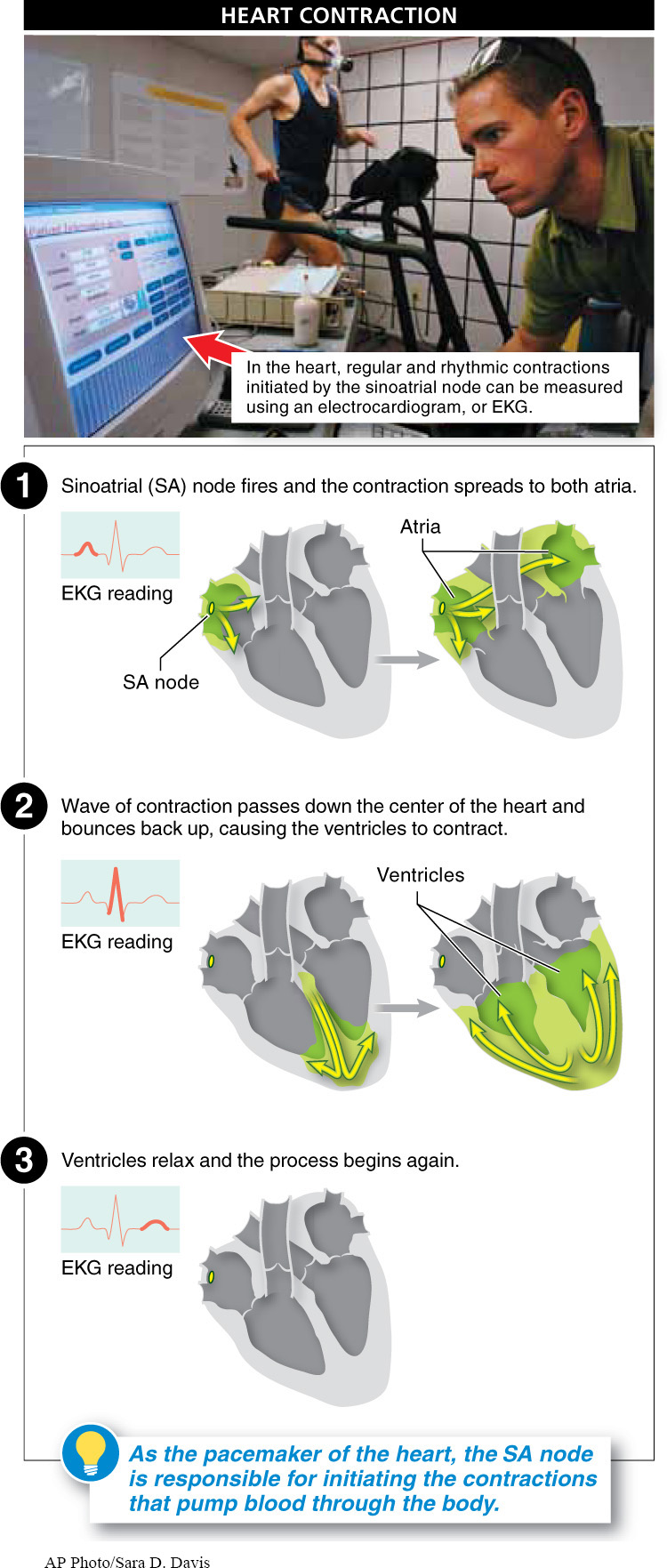
Vertebrate hearts have a small piece of modified muscle tissue, the sinoatrial (SA) node, that initiates the regular, rhythmic contractions of the heart. Unlike most muscular tissue, which must be stimulated by a nerve before it contracts, the sinoatrial node spontaneously fires an electrical impulse that initiates contractions in the heart muscle. It begins this spontaneous firing early in fetal development and continues to give rise to every heartbeat for your entire life. As the pacemaker of the heart, the SA node initiates a carefully choreographed muscle contraction that results in the efficient pumping of blood to the lungs and to the rest of the body.
837
Beginning just above the right atrium, the electrical impulse in the SA node quickly spreads to the left atrium as well. As the atria contract, blood is pushed into the ventricles. The atria then enter a “relaxation” phase, and the wave of contraction continues, passing down the center of the heart and pausing briefly as it passes between the two ventricles. On reaching the bottom of the heart, the contraction appears to almost “bounce” back upward, causing a deep contraction that pushes the blood up from the bottom of both ventricles and into the pulmonary arteries (from the right ventricle) and the aorta (from the left ventricle), much like squeezing a tube of toothpaste from the bottom up. The ventricles then enter a relaxation phase, and the SA node starts the contraction anew (FIGURE 21-11).
Because the contraction of muscle tissue is a powerful electrical event, it can be recorded by electrodes placed on the skin that detect the changing electrical charges as the heart beats. The charges are then traced into an electrocardiogram, or EKG (from the German Elektrokardiogramm). EKG readings allow quick and easy display and analysis of the cardiac cycle.
In some individuals, the sinoatrial node does not function properly or may have been damaged by infection. This malfunctioning can lead to a heartbeat that is too slow or erratic and can cause reduced blood flow, leading to problems such as fainting. An artificial pacemaker is a battery-
TAKE-HOME MESSAGE 21.5
The sinoatrial node, modified muscle tissue in the vertebrate heart, initiates regular, rhythmic contractions. A heart contraction begins with an electrical impulse in the SA node in the right atrium. The contraction quickly spreads to the left atrium, passes down the center to the bottom of the heart, then moves upward, pushing blood from both ventricles out through the pulmonary arteries and aorta.
How does the modified muscle tissue of the sinoatrial (SA) node differ from most muscular tissue?
The muscular tissue of the SA node spontaneously fires an electrical impulse; it does not need to be stimulated by a nerve in order to contract.
838